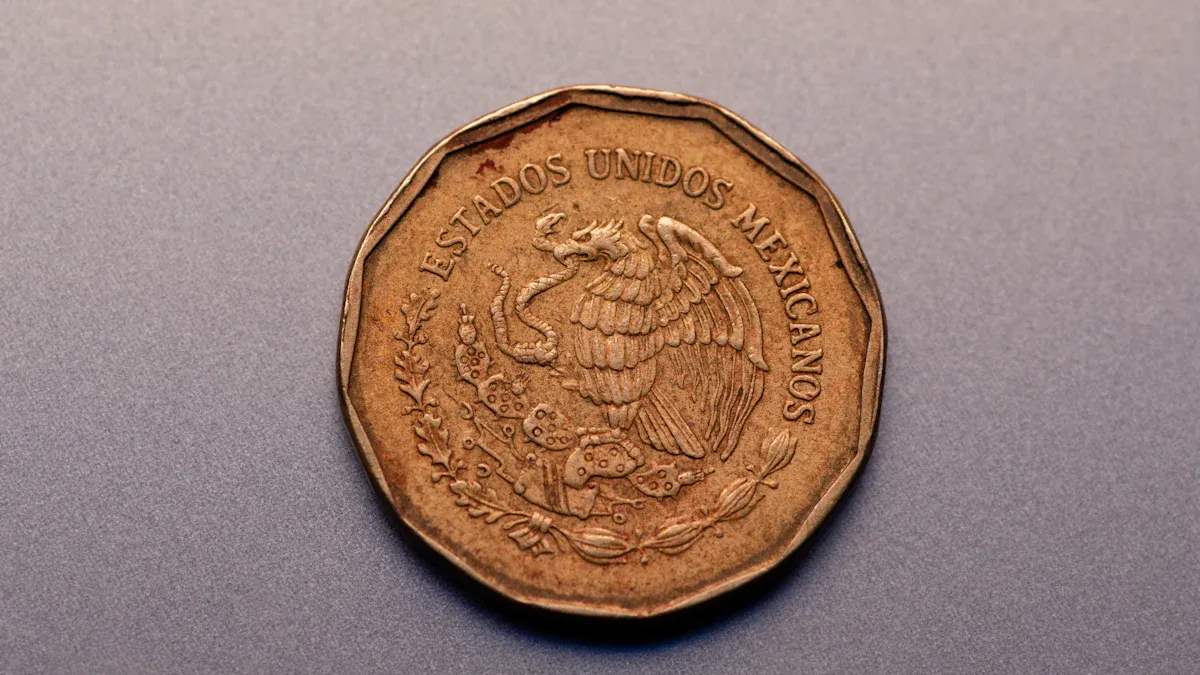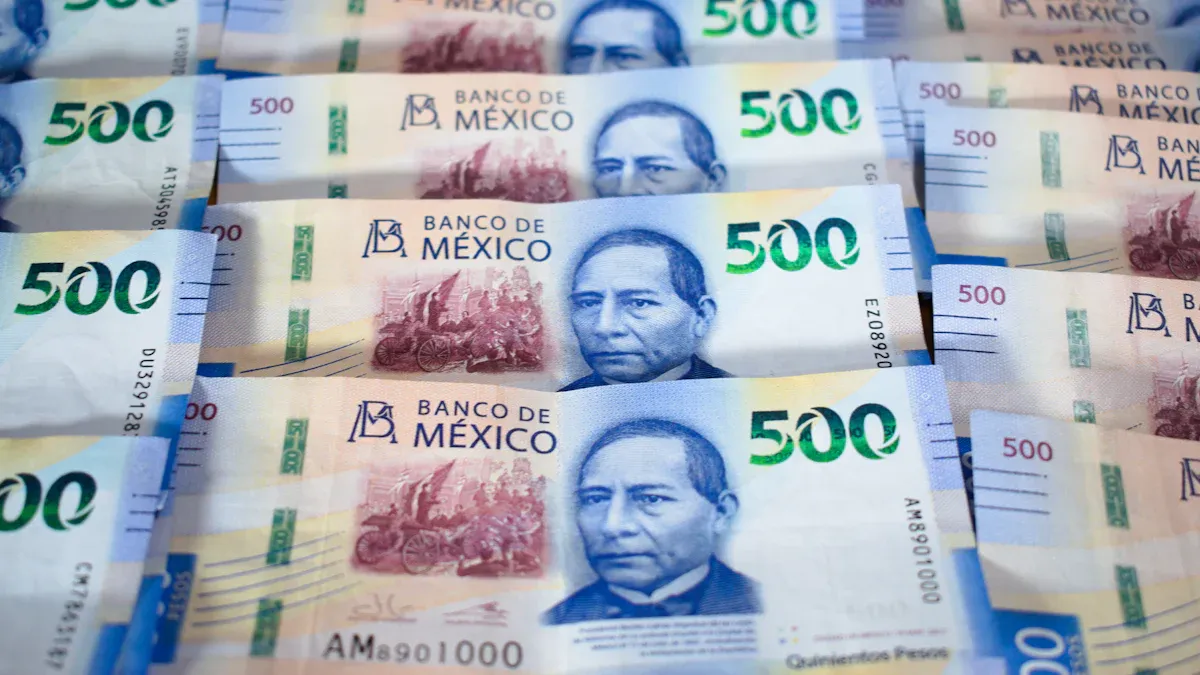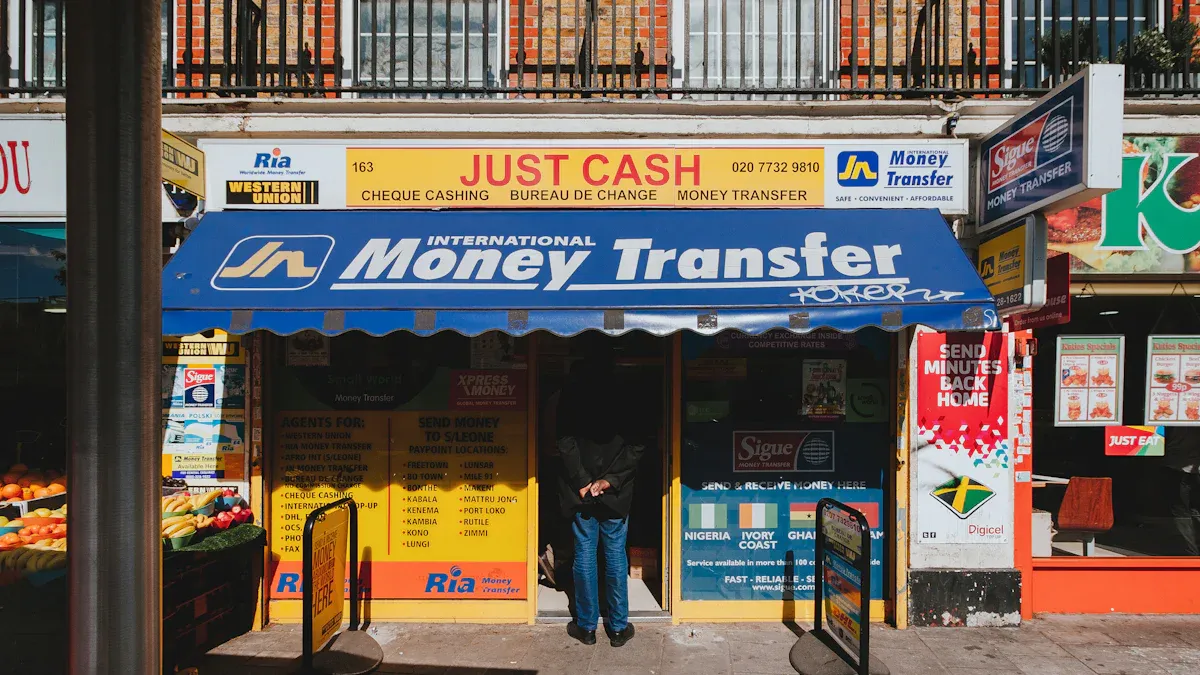- EasyCard
- Trade
- Help
- Announcement
- Academy
- SWIFT Code
- Iban Number
- Referral
- Customer Service
- Blog
- Creator
What is the currency of Mexico? What is its status in international remittances?

Image Source: pexels
Mexico’s legal tender is the Mexican Peso, with the international code MXN. It is not just a national currency but also plays a crucial role in the global remittance network.
The Mexican Peso is one of the most important currencies in Latin America and one of the most actively traded emerging market currencies globally. According to data from the Bank for International Settlements, it ranks 13th in global trading volume. Its core position is particularly prominent in the critical US-Mexico remittance corridor. In the 2024 fiscal year, the total funds remitted from the United States to Mexico reached up to $62.529 billion, highlighting the tremendous influence of this Mexican currency.
Key Points
- The Mexican Peso is an important currency in Latin America, ranking 13th in global trading volume, and is particularly prominent in remittances between the United States and Mexico.
- The history of the Mexican Peso dates back to the Spanish colonial period; it underwent currency reform in 1993 and features advanced anti-counterfeiting technology.
- The exchange rate of the Mexican Peso is influenced by multiple factors, including US dollar policy, international oil prices, Mexico’s domestic economic policies, and US-Mexico trade relations.
- The Mexican Peso plays a core role in global remittances, especially in the US-Mexico remittance corridor, with many financial institutions involved.
- The Mexican government imposes strict restrictions on cash transactions, but electronic remittances generally have no amount limits, and digitization is transforming remittance methods.
Understanding Mexico’s Currency: The Peso (MXN)

Image Source: pexels
The Mexican Peso is a key to understanding the country’s economy and culture. It has a long history, exquisite design, and its value is influenced by a variety of complex factors.
History and Basic Information
The origins of the Mexican Peso can be traced back to the Spanish colonial period, initially based on the Spanish silver coin “real.” To distinguish it from the dollar, which also uses the “$” symbol, people often use “MX$” or “MEX$” to specifically refer to the Mexican Peso.
The development of the Peso has gone through several key historical stages:
- 1821: After Mexico’s independence, it continued to use the Spanish monetary system. At that time, the 8-real silver coin was the earliest Peso.
- 1863: Mexico first issued coins denominated in “centavos,” formally establishing a decimal system where 1 Peso equals 100 centavos.
- 1993: To address high inflation in the previous decades, the Mexican government conducted a significant currency reform. The government issued the “Nuevo Peso,” replacing the old currency at a rate of 1 Nuevo Peso to 1,000 old Pesos.
- 1996: The “Nuevo” was removed from the currency name, and the Mexican currency officially returned to the name “Peso,” which it continues to use today.
Did you know? Peso anti-counterfeiting technology Modern Mexican Peso banknotes use advanced multi-layer security architecture. Ordinary people can identify first-level anti-counterfeiting features by touch and observation, such as the unique texture of intaglio printing and watermarks visible under light. For example, the watermark on the G-series 500 Peso banknote corresponds to the portrait on its front. These designs greatly increase the difficulty of counterfeiting.
The currently circulating Mexican currency denominations are as follows:
- Coins: Common denominations include 50 centavos, $1, $2, $5, and $10. Lower-value 10-centavo and 20-centavo coins are no longer common.
- Banknotes: Circulating banknote denominations include $20, $50, $100, $200, $500, and $1,000. Among them, $50, $100, and $200 denomination banknotes are the most frequently used in daily transactions.
| Denomination | Main Color | Front Figure/Pattern |
|---|---|---|
| $50 | Purple | José María Morelos (Independence Hero) |
| $100 | Red | Nezahualcóyotl (Pre-Hispanic Philosopher) |
| $200 | Light Green | Sor Juana Inés de la Cruz (17th-Century Writer) |
| $500 | Blue | Frida Kahlo and Diego Rivera (Artist Couple) |
Exchange Rate Influencing Factors
The Mexican Peso is one of the most actively traded emerging market currencies globally, and its exchange rate fluctuations are influenced by multiple factors.
- Close Relationship with the US Dollar The monetary policy of the US Federal Reserve has a direct and significant impact on the Peso exchange rate. Typically, when the Fed raises interest rates or the market expects it to do so, the dollar strengthens, causing the USD/MXN exchange rate to rise (i.e., the Peso depreciates). For example, during the 2013 “Taper Tantrum,” market expectations of rising US interest rates led to a nearly 7% depreciation of the Peso against the dollar in a short period.
- International Oil Price Fluctuations Mexico is a major oil-producing country, and oil exports are an important source of government revenue. Therefore, changes in international crude oil prices directly affect the Peso’s value. Studies show that when international oil prices rise, the Peso typically appreciates; conversely, falling oil prices put depreciation pressure on the Peso.
- Mexico’s Domestic Economic Policies Banco de México (Banxico), as the country’s central bank, has the primary responsibility of maintaining the stability of the Peso’s purchasing power through monetary policy. The benchmark interest rate set by the central bank is a key tool influencing the exchange rate. To control inflation, the central bank may choose to raise interest rates, which typically attracts foreign capital inflows, thereby supporting the Peso’s value. Additionally, Mexico has over $245 billion in international reserves, providing strong support for the central bank to intervene in the foreign exchange market and stabilize the Peso during sharp market fluctuations.
- US-Mexico Trade Relations The United States is Mexico’s largest trading partner, and changes in trade terms such as the US-Mexico-Canada Agreement (USMCA) are crucial to the Peso exchange rate. Any negative news about tariffs or trade rules can trigger market concerns, leading to capital outflows and Peso depreciation. For example, analysts predict that if the US imposes a 25% tariff on all Mexican products, the Peso could fall 5% to 10%. Conversely, a stable and positive trade environment can boost investor confidence and drive Peso appreciation.
The Peso’s Role in International Remittances

Image Source: unsplash
The Mexican Peso is not only Mexico’s domestic currency but also occupies a pivotal strategic position in the global financial system, especially in the field of international remittances.
Global Liquidity and Ranking
The Mexican Peso is one of the most actively traded emerging market currencies globally. Its high liquidity makes it a popular choice for forex traders. In the Americas, the Peso’s trading volume ranks third, behind only the US dollar and the Canadian dollar. This high liquidity means buying and selling Pesos is very convenient, with relatively low transaction costs.
In all transactions involving the Peso, the USD/MXN currency pair has the strongest liquidity. This reflects the close economic ties between the US and Mexico. Traders and investors closely monitor the fluctuations of this currency pair, as it is often seen as an indicator of market risk appetite for emerging markets.
The Peso’s high liquidity is also accompanied by high volatility. For long-term investors, this may mean risk. But for short-term forex traders, volatility creates opportunities to profit from price movements.
Core Remittance Currency Role
The Peso plays a core role in international remittances, especially in the funding channel connecting the United States and Mexico. Millions of Mexicans working in the US remit their income back home each year, and these funds are an important economic source for many Mexican families.
- Dominance in US-Mexico Remittances: The United States is the most important source of remittances for Mexico. It is estimated that up to 95% of all remittances received by Mexico in 2023 came from the United States. This makes USD to Peso remittances one of the busiest remittance corridors globally.
- Deep Involvement of Financial Institutions: To meet the huge market demand, many large financial institutions have launched specialized US-Mexico remittance services.
- Citigroup Inc.: Through its affiliate bank in Mexico, it launched bilateral credit cards convenient for immigrants, simplifying cross-border fund transfers.
- Bank of America Corporation: In the first half of 2004, the number of bank transfer accounts in its US-Mexico channel achieved an astonishing 1500% growth, showing strong market demand for formal banking channels.
- Wells Fargo: Offers an account-to-account wire transfer service called “InterCuenta Express.” Customers can pay a fixed fee of $8 to send up to $3,000 directly to a recipient’s bank account in Mexico.
- Seasonal Remittance Peaks: Remittance volumes change significantly with seasons and holidays. Traditional festivals like Christmas and New Year are peak periods for remittances. Data shows that remittance activity is very active during holidays.
| Year | November to December Remittance Growth Rate |
|---|---|
| 2023 | 14% |
| 2022 | 20% |
December is usually the peak month for remittances throughout the year. This seasonal growth not only strengthens emotional ties between cross-border families but also injects important consumption power into the local Mexican economy. This unique flow pattern of the Mexican currency reflects the profound impact of cultural traditions on financial activities.
Remittance Process and Restrictions
To maintain the stability of the financial system and combat illegal fund flows, the Mexican government and central bank implement strict regulations on Peso remittance and exchange processes.
The Mexican Ministry of Finance (SHCP) issued regulations in 2010 aimed at curbing money laundering activities, primarily targeting US dollar cash transactions. These regulations have a direct impact on people depositing or exchanging cash through banks.
The main cash transaction restrictions are as follows:
- Bank Individual Customers: The monthly limit for depositing US dollar cash into bank accounts is $4,000.
- Non-Bank Customers: The daily limit for US dollar cash transactions (such as exchanging for Pesos) at banks is $300, with a monthly cumulative limit of $1,500.
- Foreign Tourists: The monthly limit for exchanging US dollar cash is $1,500.
- Identity Verification: Banks need to collect identity information for all non-customer individuals conducting cash transactions.
Important Note: These restrictions primarily apply to cash transactions. Non-cash transactions conducted via wire transfers, ACH payments, credit cards, or debit cards are not subject to these amount limits. For most international remittances, choosing a formal online remittance platform or bank wire transfer service is a more efficient and convenient method.
Why is the Peso So Important in International Remittances?
The importance of the Mexican Peso in international remittances stems from its huge contribution to the Mexican economy, strong financial system support, and evolving digital trends. These factors collectively consolidate the Peso’s key position in global fund flows.
Contribution to Mexico’s Economy
International remittances are a lifeline for Mexico’s economy. These funds flowing in in Peso form bring stable and important foreign exchange income to the country.
- Primary Foreign Exchange Source: Remittances are Mexico’s most important net foreign exchange source, contributing even more than the combined total of manufacturing exports and tourism.
- Economic Stabilizer: These funds provide stable income for millions of families. At the same time, they reduce the government’s reliance on overseas borrowing during economic crises, enhancing the country’s economic resilience.
Billions of dollars in remittances each year directly support Mexico’s consumer market. These funds flow into local communities, promoting development in retail, construction, and services, becoming an important driver of economic growth.
Support Role of the Financial System
Mexico’s efficient financial infrastructure is the guarantee for handling massive remittance transactions. The Interbank Electronic Payment System (SPEI) established by Banco de México plays a core role in this. SPEI is an advanced electronic network supporting transactions between financial institutions.
The SPEI system has the following key advantages:
- Real-Time Settlement: Funds can be processed and deposited into the recipient’s account within seconds of initiation.
- 24/7 Operation: The system runs year-round (24/7/365), allowing users to make payments at any time.
- Cost-Effective: Compared to traditional wire transfers, SPEI has lower transaction fees and higher processing efficiency.
This powerful system ensures that bank transfers from the US to Mexico can be completed quickly, reducing what originally took several days to nearly instant.
Digital Future Trends
Mexico’s remittance sector is undergoing a profound digital transformation. Fintech companies and emerging technologies are reshaping the flow of this Mexican currency.
On one hand, Banco de México is actively promoting digital payment tools, such as CoDi for QR code payments and DiMo for transfers using only phone numbers. These initiatives aim to improve financial inclusion, making it easier for more people to receive and use digital funds.
On the other hand, fintech companies and cryptocurrencies also provide new options.
- Fintech Innovation: Companies like Wise are entering the Mexican market, aiming to provide lower-cost, more transparent international remittance services, challenging traditional models with hidden fees up to 10%.
- Cryptocurrency Applications: Cryptocurrencies (especially stablecoins) offer extremely low-cost, ultra-fast cross-border transfer solutions. For families receiving a few hundred dollars per month, the saved fees can improve quality of life. This makes cryptocurrencies no longer a distant future concept but a practical remittance option.
The Mexican Peso (MXN) is not only Mexico’s national currency but also a key node in the global remittance network. Its exchange rate stability and market liquidity directly relate to the livelihoods of millions of Mexican families and the health of the national economy.
However, the future of the Peso also faces some uncertainties, which may affect its stability:
- Potential US tariff policies
- Future review of the US-Mexico-Canada Agreement (USMCA)
- Impact of changes in US immigration policy on remittances
For remitters, choosing the right channel is also crucial, as costs vary significantly across channels.
| Remittance Channel | Average Cost Range for $200 Remittance |
|---|---|
| Bank | 4% - 18% |
| Traditional Remittance Operators (MTOs) | 4% - 10% |
| Digital-First MTO Apps | 2% - 5% |
Therefore, whether for individuals or businesses, understanding the Peso’s special status is crucial.
FAQ
Why do both the Mexican Peso and the US Dollar use the “$” symbol?
The “$” symbol originated from the currency of the Spanish colonial period. The Mexican Peso was one of the earliest currencies to use this symbol. To distinguish them, people usually use “MX$” or “MEX$” to specifically refer to the Mexican Peso, while the dollar is denoted as “US$”.
What is the most cost-effective way to remit money to Mexico?
Choosing the right remittance channel can save on fees.
- Digital Remittance Apps: Usually the lowest cost, with rates between 2% and 5%.
- Traditional Remittance Companies: Moderate fees.
- Bank Wire Transfers: Highest fees, potentially up to 18%.
Comparing fees and exchange rates across different platforms is key to finding the best option.
Where can I find the most accurate Peso exchange rate?
There are multiple reliable channels to query real-time exchange rates. You can refer to major financial information websites (such as Reuters, Bloomberg), bank official websites, or professional forex trading platforms. The data provided by these channels is usually the most accurate and timely.
Are there amount limits for remitting money to Mexico?
Limits primarily apply to US dollar cash transactions.
Non-cash transactions conducted through banks, such as wire transfers or online transfers, generally have no amount limits set by the Mexican government. However, remittance companies or banks themselves may have limits on single transactions.
*This article is provided for general information purposes and does not constitute legal, tax or other professional advice from BiyaPay or its subsidiaries and its affiliates, and it is not intended as a substitute for obtaining advice from a financial advisor or any other professional.
We make no representations, warranties or warranties, express or implied, as to the accuracy, completeness or timeliness of the contents of this publication.




Contact Us
Company and Team
BiyaPay Products
Customer Services
is a broker-dealer registered with the U.S. Securities and Exchange Commission (SEC) (No.: 802-127417), member of the Financial Industry Regulatory Authority (FINRA) (CRD: 325027), member of the Securities Investor Protection Corporation (SIPC), and regulated by FINRA and SEC.
registered with the US Financial Crimes Enforcement Network (FinCEN), as a Money Services Business (MSB), registration number: 31000218637349, and regulated by FinCEN.
registered as Financial Service Provider (FSP number: FSP1007221) in New Zealand, and is a member of the Financial Dispute Resolution Scheme, a New Zealand independent dispute resolution service provider.




















